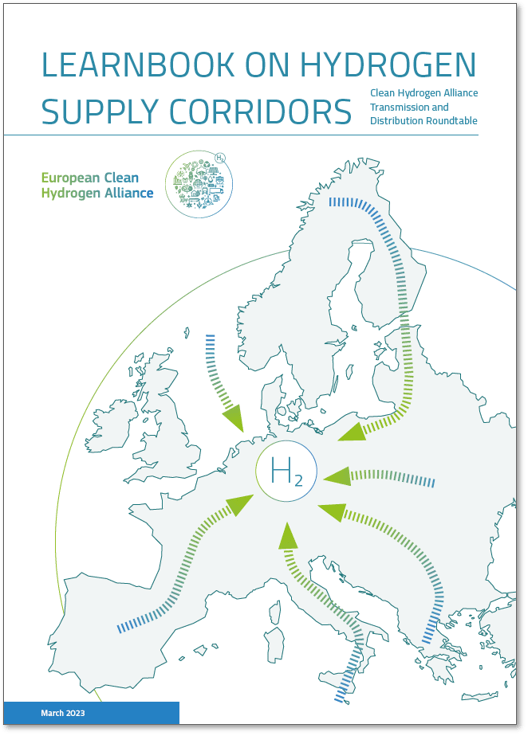The European Clean Hydrogen Alliance (ECH2A) has published a comprehensive “Learnbook” on hydrogen supply corridors across Europe. This document serves as a strategic and technical guide for developing a pan-European hydrogen infrastructure to support industrial decarbonization, energy security, and innovation in energy systems.
Why Hydrogen Corridors Matter
To meet the European Union’s climate targets and reduce dependency on fossil fuels, 20 million tonnes of hydrogen are targeted for production and import by 2030. Hydrogen supply corridors are the infrastructure backbone to achieve this — connecting production sites (often in Southern Europe, North Africa, or offshore wind areas) with high-demand regions like Germany and Central Europe.
For developers and businesses, this opens up massive opportunities:
-
Infrastructure modernization: repurposing existing gas pipelines for hydrogen.
-
Industrial integration: supporting steel, chemicals, and transport sectors.
-
Tech innovation: enabling new storage, transport, and conversion technologies.
Six Key Hydrogen Corridors (and Germany as a central hub)
The Learnbook outlines six major supply corridors:
-
South Central (Adriatic) Corridor – Connects North Africa (Algeria, Tunisia) to Italy and Central Europe. Uses repurposed gas pipelines and deep underground storage. Major potential for import of low-cost hydrogen.
-
Iberian Corridor (H2Med) – Links high-capacity solar/wind hydrogen production in Spain and Portugal with demand in France, Germany, and beyond. Includes large-scale pipeline and storage projects and a key maritime link between Barcelona and Marseille.
-
North Sea Corridor – Taps into Belgium and the Netherlands as key hydrogen import and conversion hubs (via ports like Rotterdam and Antwerp). Focus on blue and green hydrogen, large-scale terminals, and integration with offshore wind.
-
Nordic-Baltic Corridor – Leverages vast wind and hydropower potential in Scandinavia and the Baltics. Includes new pipeline routes and seasonal storage, and offers connections to Central Europe and potentially Ukraine.
-
Eastern Corridor – Focuses on unlocking Ukraine’s massive green hydrogen potential. Relies on repurposing gas pipelines and integrating with storage in Austria, Slovakia, and Czechia.
-
South-Eastern Corridor – Aims to decarbonize heavy industry across Greece, Bulgaria, Romania, and neighboring countries. Includes hydrogen-ready ports and storage in depleted gas fields.
Germany is the convergence point for all corridors, with a projected hydrogen demand of 95–130 TWh by 2030 and over 700 DSOs and TSOs ready to scale up a repurposed hydrogen infrastructure.
Cross-Cutting Bottlenecks
Several shared challenges were identified across the corridors:
-
Insufficient storage capacity (especially in Iberia and the Balkans)
-
Regulatory delays and lack of harmonized permitting
-
Underdeveloped port infrastructure for hydrogen imports
-
Slow financing mechanisms delaying project initiation
Recommendations for Innovators and Policy-Makers
-
Scale-up fast: Prioritize repurposing of existing gas networks for early hydrogen transport.
-
Think modular: Projects need to be designed in scalable phases to meet 2030, 2040, and 2050 milestones.
-
Build partnerships: Energy cooperation with North African and Eastern European countries is vital.
-
Design for flexibility: Storage, blending, and conversion technologies (ammonia, LOHCs) should be part of every corridor strategy.
-
Integrate digital tools: Data platforms for real-time pipeline usage, storage status, and regulatory tracking will be key enablers.

